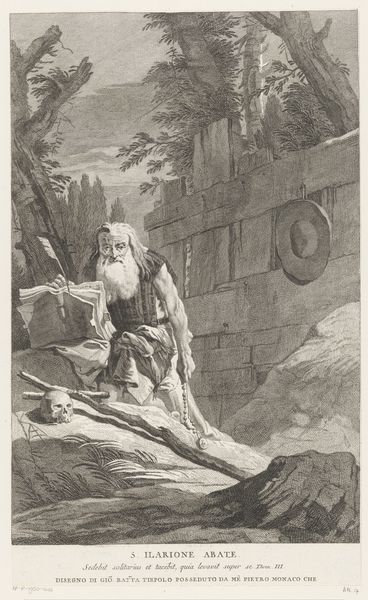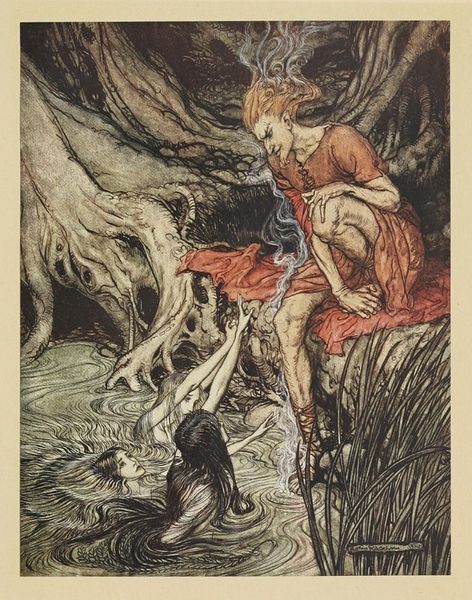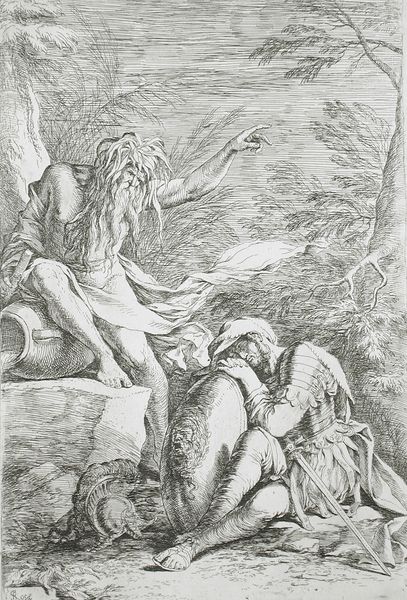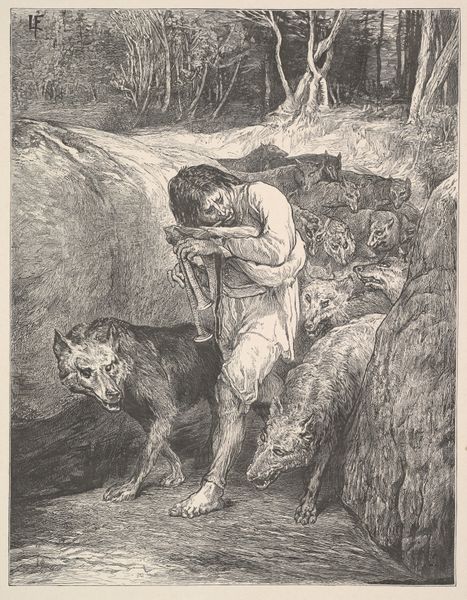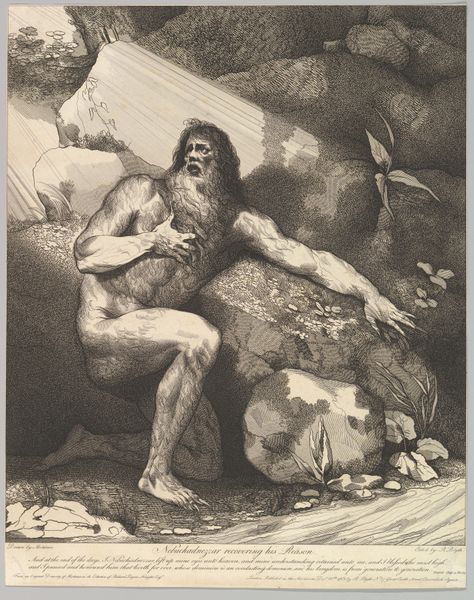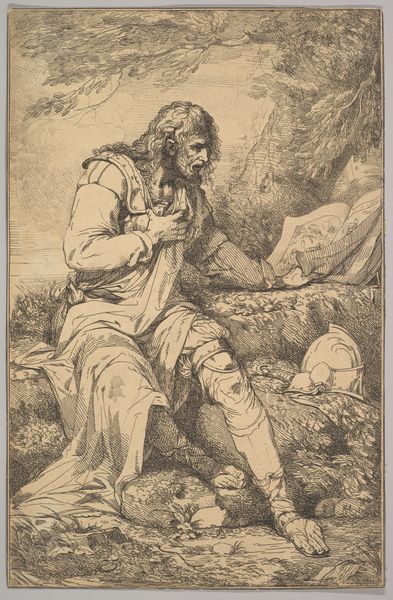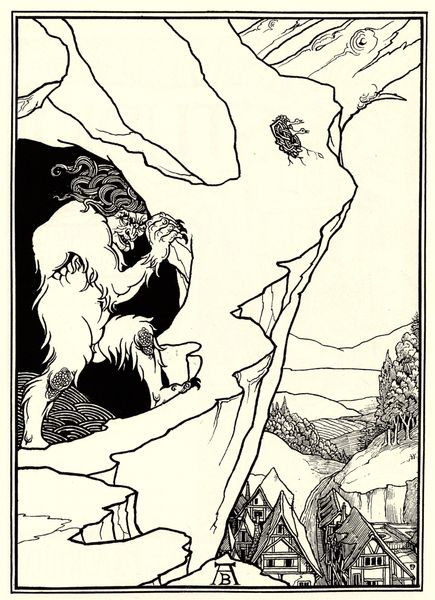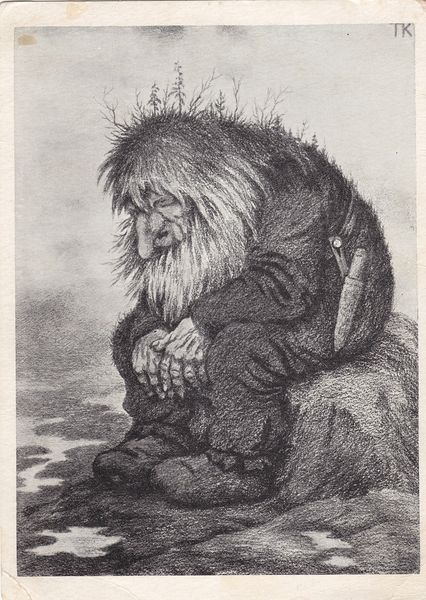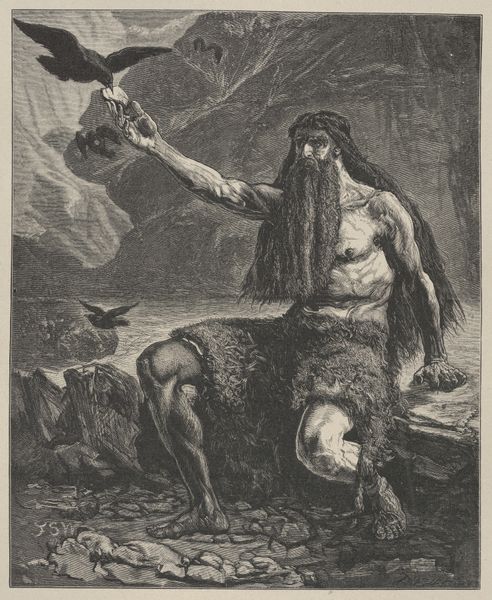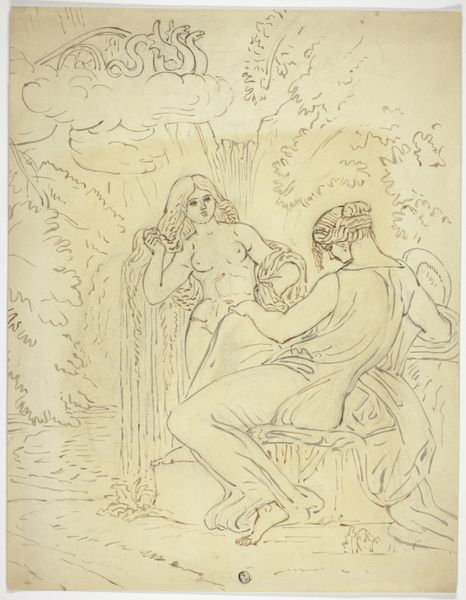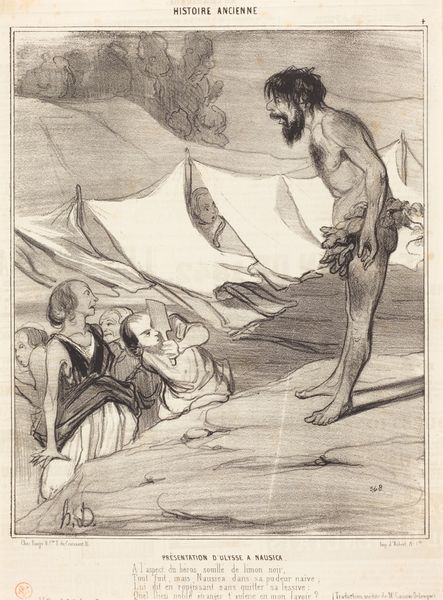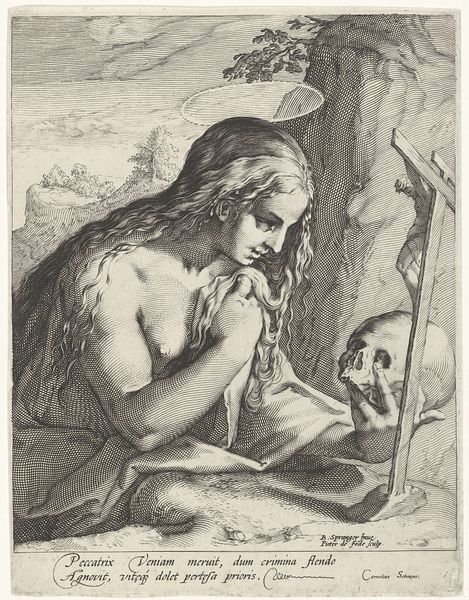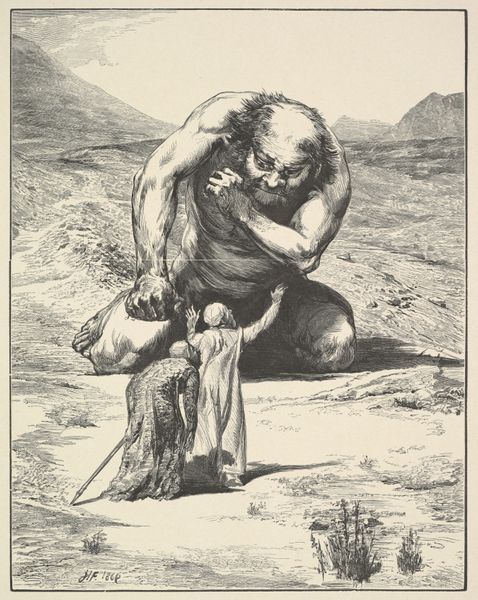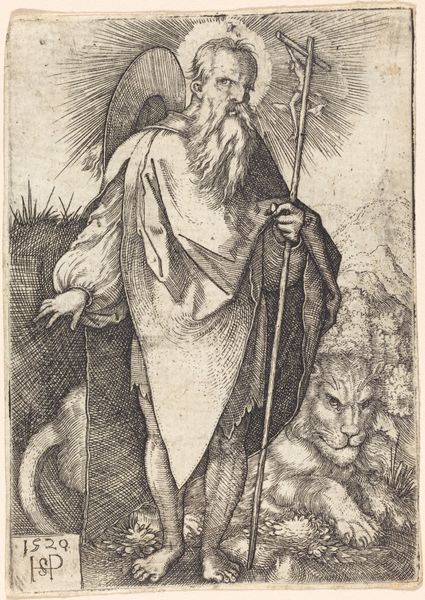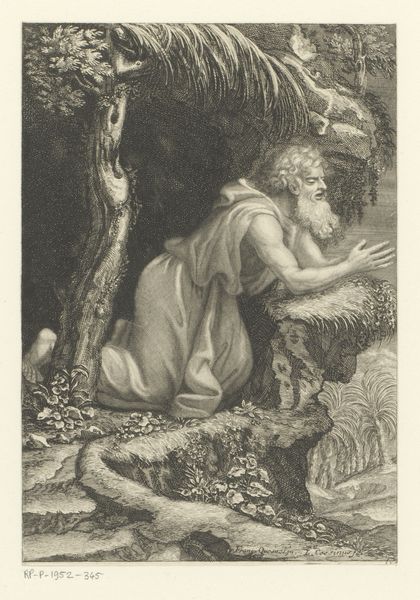
drawing, paper, watercolor, ink, pencil
#
portrait
#
drawing
#
16_19th-century
#
landscape
#
figuration
#
paper
#
oil painting
#
watercolor
#
ink
#
german
#
romanticism
#
pencil
#
watercolor
Copyright: Public Domain
Wilhelm Süs made this artwork in pencil and watercolor, depicting a river god at a waterfall. The river god embodies a set of ideas about the natural world that were common in late 19th-century Germany. As industrialisation grew, so did a nostalgia for an idealized past, with a focus on nature and folklore. The image of a classical god merges with the German preoccupation with unspoiled landscapes. Water was a symbol of purity, of escape from the modern world. The heroic, muscular figure of the god also speaks to the rise of nationalism and a focus on masculine strength. The image creates meaning through visual codes, referencing classical mythology. The choice of watercolor allows the artist to create a translucent effect, evoking the fluidity and purity of water. The god is intrinsically linked to his environment; he seems to emerge from the rocks. Understanding the context of this work relies on resources such as folklore archives and studies of German cultural history. This highlights how art history involves not just looking at art itself, but understanding the social and intellectual contexts that shaped its creation.
Comments
No comments
Be the first to comment and join the conversation on the ultimate creative platform.
